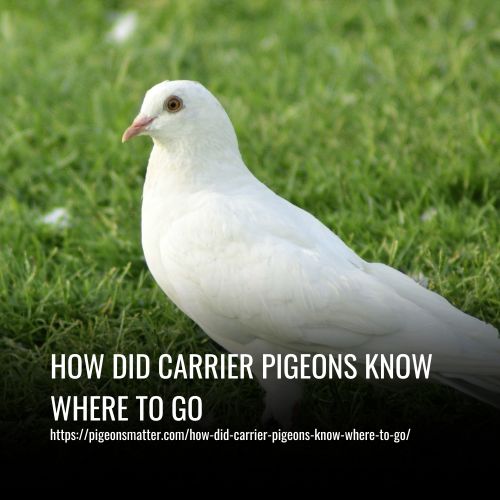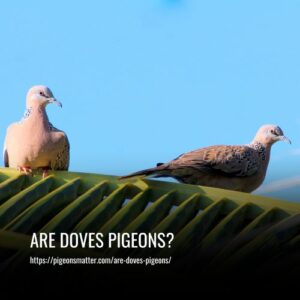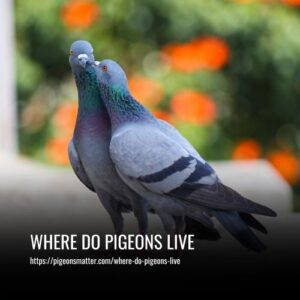Carrier pigeons have been utilized for centuries for delivering messages across long distances due to their impressive navigational capabilities. They possess an innate sense of direction, can detect changes in air pressure, and align themselves with the Earth’s magnetic field. They also have specialized physical features such as larger beaks and ear-like structures that aid them in navigating long distances.
To train carrier pigeons, they are placed in specially designed pigeon lofts where they become familiar with their release location. By being released from different places each time, they learn to recognize and remember the route back home. Racing pigeons even carry small lumps of iron or magnetite in their bodies that help them detect changes in the Earth’s magnetic field, aiding in their navigation.
Despite being largely replaced by modern technology, carrier pigeons remain a symbol of skillful navigation and efficient delivery through their incredible feats throughout history.

What Are Carrier Pigeons?
Carrier pigeons have been used for centuries to deliver messages over long distances. These birds have unique abilities that enable them to find their way home, including an innate sense of direction, sensing changes in air pressure, and aligning themselves with the Earth’s magnetic field. Carrier pigeons also have specialized physical features that help them navigate better when flying long distances.
To train carrier pigeons, they are placed in specially designed pigeon lofts where they become accustomed to their release location. As they are released from different locations each time, they learn how to recognize and remember the route back home. Racing pigeons carry small lumps of iron or magnetite in their bodies which helps them detect changes in the Earth’s magnetic field as they fly along flight paths.
Carrier pigeons were once an important part of the military’s Signal Corps but have found more peaceful uses today such as for pigeon racing or delivering mail between faraway cities and towns. While modern technology has largely replaced pigeons as efficient messengers, these remarkable birds remain a symbol of skillful navigation and delivery through their incredible feats over history.
Historical Context of Carrier Pigeons
Carrier pigeons have a rich history, dating back to ancient Egypt, and were used for military purposes by Julius Caesar in the 1st century BC. During the Middle Ages, they were used for communication between monasteries, and during World War I and II, they delivered vital messages across Europe.
Today, carrier pigeons are primarily used for sport in pigeon racing competitions, where they can travel up to 600 miles in a single day. They possess remarkable navigational skills and an innate sense of direction, which allows them to find their way home with incredible accuracy.
Recent studies have even suggested that homing pigeons have a magnetic sense, which helps them align with Earth’s magnetic field lines during flight. This is believed to be due to the presence of iron particles stored in specialized cuticulosomes in their beaks and ears, which are sensitive to changes in magnetic fields.
Carrier pigeons have been developed and trained over centuries to become one of nature’s most impressive navigators, delivering important messages quickly and accurately over vast distances without fail.
1. Origin and History of the Use of Carrier Pigeons:
Carrier pigeons have a rich history dating back to ancient Egypt and have been used for military purposes, communication between monasteries, and message delivery during World War I and II. Today, they are primarily used for sport in pigeon racing competitions.
These birds possess remarkable navigational skills and an innate sense of direction, allowing them to travel up to 600 miles in a single day. Recent studies suggest that homing pigeons have a magnetic sense that helps them align with Earth’s magnetic field lines during flight.
Carrier pigeons are impressive navigators, delivering important messages quickly and accurately over vast distances without fail.
2. Development of the Signal Corps:
The US Signal Corps has a rich history of utilizing carrier pigeons to deliver crucial messages over great distances. These pigeons were trained to fly at high speeds with exceptional accuracy, making them an invaluable tool in both World War I and World War II.
The Signal Corps also developed advanced pigeon lofts, which served as communication hubs for the birds. Scientists studied the homing abilities of carrier pigeons, researching everything from flight paths and balancing during flight to the electrical signals generated when a pigeon was released from its loft location.
Today, while the Signal Corps still uses carrier pigeons for military purposes, their primary use is now in pigeon racing competitions. Through centuries of development and training, these birds have become some of the most impressive navigators in nature, reliably delivering important messages over vast distances.
3. Julius Caesar’s Use of Carrier Pigeons:
Julius Caesar was a trailblazer in the use of carrier pigeons for communication during his military campaigns. In 50 BC, he recognized the birds’ natural homing ability and used it to his advantage by releasing them from predetermined locations and having them deliver messages to his troops and allies across Europe.
By releasing a pigeon from his army camp in Gaul and having it return to a predetermined location in Italy, Caesar was able to communicate quickly and reliably with his allies in Rome. This innovative use of carrier pigeons allowed him to maintain contact with his forces over great distances – a crucial advantage during wartime.
Today, carrier pigeons are still used for a variety of purposes, both military and recreational. Thanks to Julius Caesar’s pioneering use of them millennia ago, these birds continue to play an important role in communication and transportation.
4. Popularity in the 19th Century:
Carrier pigeons were highly valued in the 19th century for their ability to quickly and reliably send messages across long distances. During the American Civil War, both sides used them to communicate across enemy lines. Additionally, pigeon racing became a popular pastime as people marveled at the birds’ navigational skills and competitive spirit. Pigeon lofts were established in cities and towns across Europe and America to house racing pigeons.
Today, pigeon post is still enjoyed as a sport worldwide, although it has largely been replaced by modern communication methods. The popularity of pigeon posts in the 19th century serves as a testament to the remarkable abilities of these birds, which can fly hundreds of miles and navigate with impressive accuracy.
Types of Pigeons Used for Messaging
Carrier pigeons have been used for messaging purposes for centuries, with homing pigeons being the most popular breed due to their strong sense of direction and ability to cover long distances in a single day. Other breeds, such as rock pigeons, have also been utilized for messaging due to their physical and behavioral traits.
Julius Caesar is credited with developing the first organized carrier pigeon service in the 1st century BC, using both homing and migratory pigeons to carry messages between Rome and his provinces. Today, military personnel still rely on carrier pigeons for communication in regions without access to other forms of communication.
All carrier pigeons share an impressive navigational ability, allowing them to find their way home from unfamiliar locations. This trait has made them invaluable tools for communication over long distances throughout history.
1. Homing or Racing Pigeons:
Homing and racing pigeons are remarkable birds that have been used for centuries to carry messages over long distances. These birds possess a unique magnetic sense that allows them to orient themselves by the Earth’s magnetic field lines, enabling them to find their way home from unfamiliar locations.
Racing pigeons are specially bred and trained to follow a specific route and reach their destination within a set period of time. They rely on landmarks, weather patterns, and other environmental cues in addition to their magnetic sense to navigate along their flight path. Many pigeon fanciers keep these birds in lofts, providing them with safety and a place to rest between flights.
Carrier pigeons also store iron particles in lumps in their beak or ear, which helps them balance during flight and detect electrical signals from magnetoreceptors located in various parts of their body. Thanks to these remarkable abilities, carrier pigeons have played an important role in communication throughout history and continue to do so today.
2. Rock Doves or Rock Pigeons:
Rock Doves, also known as Rock Pigeons, are a common sight in urban areas around the world. These birds have distinctive grayish-blue plumage with two black bars on each wing and a white rump. They have been domesticated for centuries and are the ancestors of all modern domestic pigeon breeds, including racing and homing pigeons.
Rock Doves have been used for communication purposes for centuries. In fact, Julius Caesar used them to deliver messages across Europe. Today, they are still used in pigeon post services and pigeon racing events around the world.
One of the most remarkable things about Rock Doves is their navigational skills. They are able to sense the Earth’s magnetic field lines, which helps them fly long distances. Recent studies suggest that this is made possible by iron storage in lumps located at the base of their beak or ear cuticulosomes which act like tiny magnets when exposed to magnetoreceptors located throughout their body.
Thanks to their amazing abilities, Rock Doves continue to play an important role in communication today. Whether they are delivering messages or participating in racing events, these birds are truly remarkable.
3. Other Migratory Birds:
Migratory birds are an integral part of the ecosystem, traveling thousands of miles in search of food and a more suitable climate. However, their journey is fraught with obstacles such as adverse weather conditions, predators, and human interference.
Despite these challenges, migratory birds possess remarkable navigational skills that allow them to find their way back to the same location year after year. While the exact method of navigation is still largely unknown, it is believed to be based on the bird’s internal magnetic sense and landmarks from previous journeys.
These birds are crucial to our environment as they spread seeds and aid in pollination. Therefore, it is essential to protect them during their long journeys by limiting any interference or disruption caused by humans. By doing so, we can ensure the well-being of these amazing creatures and maintain the delicate balance of our ecosystem.
4. Distinctive Features of Homing/Racing Pigeons:
Homing and racing pigeons have unique capabilities that distinguish them from other pigeon breeds. Their natural sense of direction allows them to navigate unfamiliar territory and return home, aided by their ability to detect Earth’s magnetic fields and their memory of previous journeys and landmarks.
Racing pigeons have been selectively bred for their speed, endurance, and aerodynamic flight patterns, with larger wings and increased stamina compared to other bird species. Their distinctive curved beak and magnetoreceptors in their ears aid in navigation during long-distance races.
These impressive abilities have made homing and racing pigeons valuable to humans for centuries, used for communication, sporting events, and transportation. They are true champions of the sky, and it’s fascinating to observe their unique qualities in action.
How carrier pigeons navigate using magnetic fields:
Carrier pigeons possess a unique ability to navigate through unfamiliar terrain with accuracy, thanks to their remarkable sense of magnetoreception. This ability is due to the iron particles found in their beaks, ears, and cuticulosomes, which act as an electrical signal to help with direction-finding. Homing pigeons have been used for centuries in communication, especially during war times when they were used by armies for message delivery.
Carrier pigeons can be released from a known location and find their way back home even after being transported hundreds of kilometers away. In summary, carrier pigeons possess a remarkable physiological property that enables them to navigate over long distances with accuracy.
1. Navigating flights using magnetic field lines as a guide:
Carrier pigeons are impressive navigators, relying on magnetoreception to detect Earth’s magnetic fields and determine their positions and flight paths. They can use magnetic field lines as a guide to balance during flight and identify their destination location.
Iron particles in their beaks, ears, and cuticulosomes provide further direction-finding cues, allowing the pigeons to reliably locate themselves even when transported far from home. These physiological properties enable carrier pigeons to navigate long distances with remarkable accuracy, making them valuable assets for communication and transportation in the past.
FAQs
Carrier pigeons, also known as homing pigeons, possess an extraordinary ability to navigate and return to their home lofts. The exact mechanisms are not fully understood, but it is believed that they rely on a combination of their keen sense of sight, an internal compass based on the Earth’s magnetic field, and possibly even olfactory cues.
While carrier pigeons are primarily trained to return to their home lofts, they can be conditioned to associate specific locations with feeding and positive reinforcement. This way, they may learn to deliver messages to designated places, but the training process is intricate and requires time and patience.
Carrier pigeons have demonstrated remarkable long-distance flight capabilities. They were frequently used to cover distances of up to a few hundred miles, and some exceptional pigeons have been known to travel over a thousand miles to deliver messages.
Yes, carrier pigeons played crucial roles in various historical events, particularly during wars. They were extensively used for military communication, delivering messages across enemy lines when other means were impractical or risky.
While carrier pigeons are renowned for their homing abilities, not all pigeons complete their missions. Various factors such as adverse weather conditions, predators, or fatigue could impact their journey, leading to occasional losses.
While modern communication technologies have largely replaced carrier pigeons, they are occasionally used for symbolic or recreational purposes. Pigeon racing, where pigeons are released from a specific location and race home, remains a popular sport in some places.
Conclusion
Homing pigeons have been used for centuries to deliver messages over long distances. The process of breeding and training homing pigeons is an intricate one that requires dedication and skillful planning. Breeders must construct suitable lofts, select quality stock for breeding programs, and provide proper care through rigorous training regimes to ensure success.
Additionally, they may use special whistles or bells to help guide the birds back home once released. By understanding the needs of these amazing birds and providing a nurturing environment, breeders can create some of the most successful racing/homing pigeons in history.


